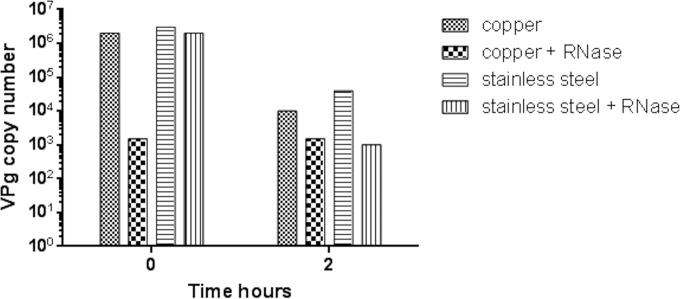FIG 7.
Pretreatment of test samples with RNase to determine capsid integrity. If MNV is incomplete or the capsid is damaged, the viral nucleic acid may be exposed and susceptible to RNase treatment. Approximately 5 × 105 PFU of infectious virus was applied to 1-cm2 samples of test surfaces and incubated at room temperature. At various time points, virus was removed from the surfaces. Viral RNA was purified from the samples, and cDNA was prepared and assessed for viral genome by RT-quantitative PCR as described in the text. Copy number was derived from a standard curve for the standard VPg gene, supplied by PrimerDesign Ltd. Virus exposed to copper appears to have suffered damage to capsid immediately upon contact because the VPg gene copy number is reduced in RNase-treated samples, suggesting that the viral genome was exposed. This had not occurred on stainless steel at time zero, suggesting that intact capsid is impervious to RNase. After 30 min of contact, capsid damage is seen for both surfaces, which may be affected by the drying process as well as the antiviral effects of copper.

